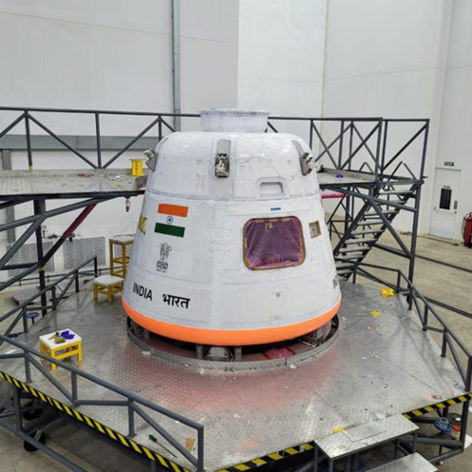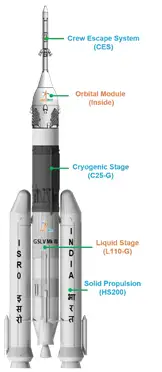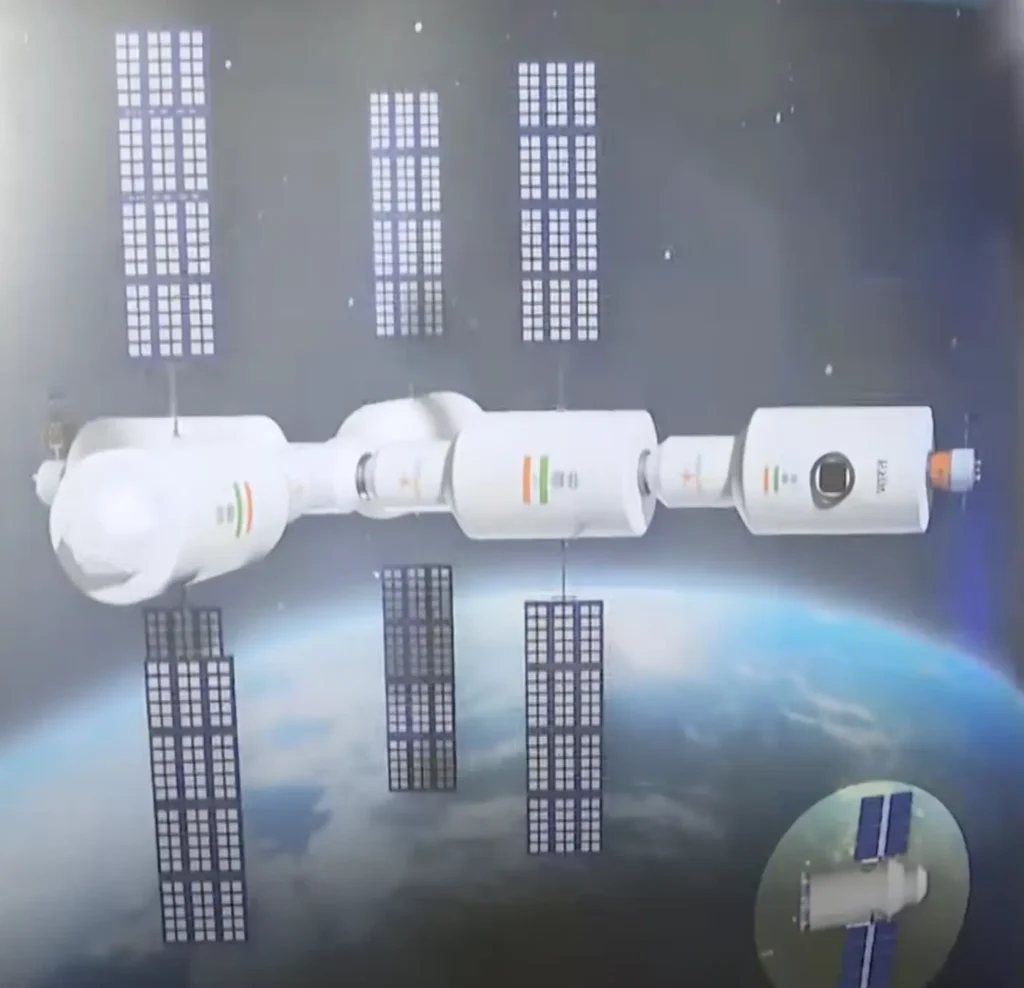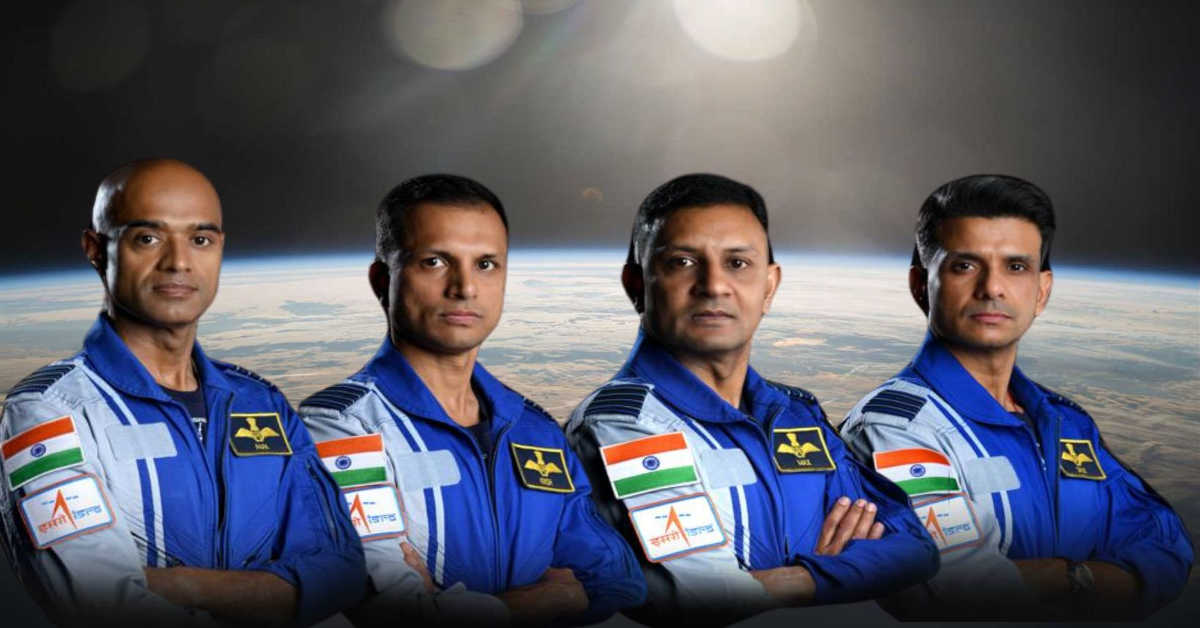The Gaganyaan Mission is an upcoming human spaceflight programme by ISRO for sending Indian astronauts (Vyomanauts) in space. It is going to be the stepping stone for India’s space exploration and over 11,000 crore rupees ($ 1.3 billion) is being invested by the Indian government on it. A natural question would arise that what is the purpose of Gaganyaan Mission. So in this article we will explore about the mission briefly followed with the various Gaganyaan mission purposes.

Table of Contents
Gaganyaan Mission: Brief explanation
Gaganyaan Mission is going to be India’s first human spaceflight programme where 3 Indian astronauts will go to the LEO (Low Earth Orbit, 400 km above Earth’s surface) for 3 days. It will be preceded by three unmanned missions, starting in December 2024, to ensure all necessary checks are completed before sending humans.
4 astronauts that have been selected for the mission are Prasanth Nair, Ajit Krishnan, Angad Pratap and Shubhanshu Shukla who all are Indian Air Force test pilots. ISRO has collaborated with multiple companies and agencies nationally and internationally for the mission’s various requirements. For eg the astronauts got their training from Russia, and prior to Gaganyaan, Shubhanshu Shukla have been selected for Axiom 4 mission which will take him to the ISS making him first Indian to board the space station.
HLVM-3 (Human rated version of LVM-3) will used for the launch. A female humanoid robot named Vyommitra will also accompany the mission for assisting the astronauts. The Gaganyaan Mission represents a monumental leap for India’s space program, showcasing its aspirations to be one of the global leader in space exploration.

Purpose of Gaganyaan Mission
1. Establish India as a Human Spaceflight Nation
One of the primary goals of Gaganyaan is to place India in the elite club of nations capable of sending humans into space, alongside Russia, the United States, and China. Successfully executing a manned mission would boost India’s international standing and demonstrate its technological capabilities in space exploration. This success could also attract partnerships and collaborations for future missions, further cementing India’s role in global space exploration.
2. Advancement of Space Technology
The Gaganyaan Mission serves as a testbed for new and indigenous technologies crucial for human spaceflight. These include life support systems, crew escape mechanisms, environmental control systems, and safe re-entry techniques. The development of these systems will provide India with capabilities that can be used in future manned missions, such as establishing an Indian space station and conducting crewed missions to the Moon.
Technologies such as environmental control and life support systems (ECLSS), spacecraft docking systems, and long-duration mission management will be refined through Gaganyaan, feeding into the infrastructure all crucial for maintaining a permanent space station like ISS and Tiangong.

Moreover, ISRO has plans to participate in lunar exploration. The technologies developed for Gaganyaan—particularly those related to crew transport, safety, and spacecraft re-entry—are fundamental steps towards achieving future Moon missions. The purpose of Gaganyaan Mission is to serve as a testing ground for these capabilities, ensuring that India can eventually send astronauts to the lunar surface, either through international collaborations or potentially with its own lunar mission.
3. Promote Scientific Research
Conducting a human mission will allow India to conduct microgravity experiments, which are not possible on Earth. These include studies in materials science, fluid dynamics, biological processes, and radiation effects on living organisms. The data gathered from these experiments could contribute to breakthroughs in healthcare, space agriculture, and even new technologies that can benefit life on Earth.
4. Inspiration and National Pride
One of the often-overlooked purposes of space missions like Gaganyaan is the impact they have on national pride and public inspiration. A successful manned mission will inspire future generations of scientists, engineers, and space enthusiasts in India. It will also showcase the nation’s growing capabilities in cutting-edge technology, fostering a sense of unity and pride among its citizens.
5. Development of Space Infrastructure
To support the Gaganyaan mission, ISRO is building the infrastructure needed for human spaceflights. This includes the development of launch vehicles, crew modules, training programs for astronauts, and space health research facilities. The investments in these areas will not only benefit Gaganyaan but also provide India with the tools needed for more advanced space missions in the future.
6. Boost to India’s Space Economy
The successful completion of Gaganyaan will boost India’s space economy, attracting investment from both domestic and international sources. Human spaceflight is a key area that can open new business opportunities in space tourism, private space missions, and collaborative international projects. The development of indigenous technology for manned missions will also benefit India’s growing space industry, helping to create jobs and foster innovation.
Conclusion
The Gaganyaan Mission is much more than just a spaceflight with humans on board. It symbolises India’s arrival on the world stage as an upcoming space superpower. The purpose of the Gaganyaan Mission is to act as a stepping stone toward long-term goals, aiming to propel India’s space technology forward, promote scientific research, inspire future generations, and enhance national pride. With Gaganyaan, India is not only pursuing human space exploration but also laying the foundation for a thriving space economy and future deep-space missions.
